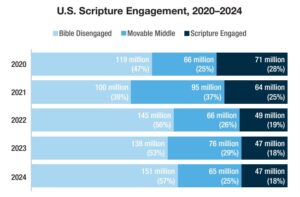
NASHVILLE, Tenn. (BP)–A limestone bone box dating to approximately 63 A.D. heralded as the only New Testament-era mention of Jesus apparently contains bone fragments at the bottom of the box, but the artifact’s owner will not allow the chips to be analyzed.
Time magazine sent two reporters to the home of the box’s owner in Jerusalem, but the owner would not allow his name or location to be disclosed because, as he put it, “I don’t want my apartment turned into a church.”
He also plans to keep the bone particles — the largest of which is half an inch wide and three inches long — in a Tupperware container at his home when the box is sent to the Royal Ontario Museum in Toronto for display, Time reported in its Nov. 4 issue. The owner said he does not want to deal with Israeli customs or add to the stir that surrounds the box itself.
The existence of the box, roughly 20 inches long, 10 inches wide and 12 inches high, was announced Oct. 21 at a news conference in Washington, D.C.
It apparently once contained the bones of James, the brother of Jesus. An inscription on the box reads, “James, son of Joseph, brother of Jesus.”
An extensive article about the limestone box, called an “ossuary,” appears in the November-December issue of the Biblical Archaeology Review, published by the Washington-based Biblical Archaeology Society. The article is titled, “Burial Box of James the Brother of Jesus.”
The bone fragments lying in the box were there when the owner bought it about 15 years ago for $700 or less, according to news reports. The owner was told at the time it had been unearthed near the Mount of Olives. The owner, a Jew, had no idea of its significance until a conversation last spring with Andre Lemaire, a specialist in ancient inscriptions at the Sorbonne University in Paris, who subsequently authored the Biblical Archaeology Review article.
Whoever sold the box to the dealer would have removed anything larger than the bone chips, Time reported, since Israeli collectors and looters know that the rabbinical authorities are sensitive about human remains.
Time reported that ossuaries often contained several family members’ bones, and radiocarbon dating may be able to determine whether the bone fragments date back to the first century. “Looters could have used the box as a handy receptacle while emptying others,” the magazine also noted.
Time quoted James Chatters, a Seattle-based archaeologist with forensic expertise, as saying it is “entirely possible” that DNA could be extracted from the remains. “Most likely to be recovered would be the mitochondrial variety, which can provide a catalog of maternal traits,” Time noted. “Of course, if the ossuary was biblical, the mother (by the Gospels’ most literal interpretation) would be Mary.”
–30–













